
Facade of the nearly 2000 year-old Teatro Marcello (which stands about 200 feet from my window-less, wifi-less, damp-air two-bedroom dungeon apartment) — Friday, 5.21, 9:15 pm.
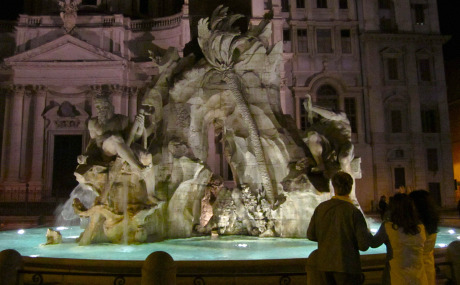
Saturday, 5.22, 1:10 am.


I’ve mentioned from time to time certain things that actors do in a film that are so offensive that they just alienate me like that. Once this happens they have to work like hell to get back in my good graces although usually I just say “the hell with it, I don’t want to know this guy or girl” and write them off.
And this isn’t just me and my quirky neuroses. Over the years I’ve heard a lot of people say “I was with him/her until he/she did that repulsive thing, and that was it.” It’s been said, for example, that Paul Giamatti lost out on a Best Actor nomination for Sideways (which he was brilliant in) because of that scene in which he stole money from his mother’s bedroom bureau. Does that make any sense? No, but people react the way they react and there’s no talking them out of it.
Anyway, an offensive thing I’ve never mentioned hit me last night. I will turn against any actor in any film who licks his/her fingers after eating. In a movie or in real life, I really and truly can’t stand the sight of this. I couldn’t even take it during the much-admired eating scene in Tom Jones. (Now that I think back on it I’m not sure if Albert Finney and whatsername actually do this.) The first time I realize I had this aversion was that first-act scene in Once Upon A Time in America when the young kid gobbles down the pastry and licks all five digits. I was cringing.
To me finger-licking is worse than watching an overweight person reach inside their pants and scratch. If your fingers are sticky after eating something (which in itself indicates a lack of refinement on your part), go to the sink and wash them off.
Perhaps if enough people repeat this objection often enough actors will think twice before going there.
I’m sure that I’ll see Love Ranch eventually (I was stopped at the door when I tried to attend a Cannes market screening last week), but I’m sensing something that hadn’t occured to me before now. Most people love or admire costar Helen Mirren and are certainly down with seeing her perform in an erotic context, but — this is 90% theory, pulled out of my ass — they don’t want to see a movie that combines Joe Pesci and sexuality.
It’s partly Pesci himself (I distinctly remember an uncomfortable audience reaction during those two sex scenes he had with Sharon Stone in Casino) but also the idea of any middle-aged short guy participating in any sort of erotic encounter. Same thing with Danny DeVito or Peter Dinklage (The Station Agent, Find Me Guilty) or Mickey Rooney in his prime or anyone else under 5′ 6″ or so. It’s weird and unfair, but you just don’t put extra-short guys in this sort of situation. Ask any producer. People don’t want to know about it. I realize that Rooney used to shag Ava Gardner over-under-sideways-down, but you wouldn’t want to depict that in a film.
Wifi for budget-minded American travellers in Rome (i.e., those not staying at four-star full-service hotels) is still, for the most part, a future-tense thing. It took me over four hours of wandering around and getting lost before finding an internet “point” (i.e., walk-in salon) that offers wifi for people carrying laptops. 95% of Rome’s internet environments are still offering 2001 technology with rented flatscreens. Forget wifi — they don’t even offer ethernet cable plug-ins! I asked the guy at the desk if he knows of other operations like this one (which I’m sitting in, just up the hill from Piazza Barberini). “Places like this are rare,” he said with a certain resignation.


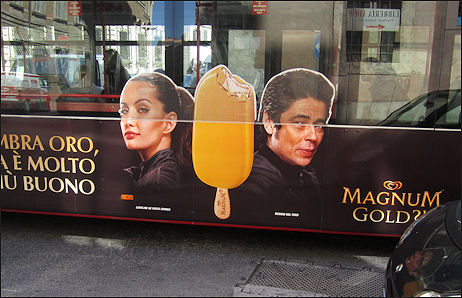

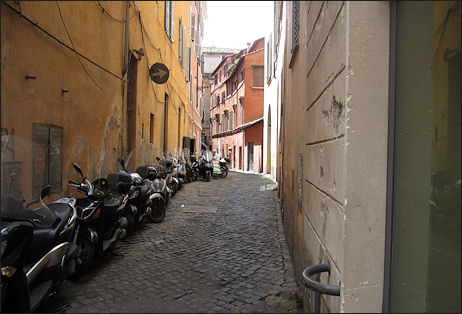
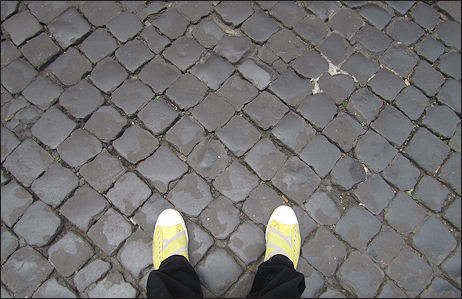

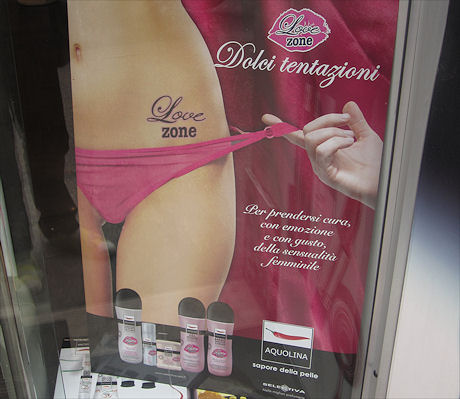
Salon‘s Andrew O’Hehir has posted an excellent (if abridged) Fair Game review along with a perceptive, quote-heavy summary of the post-screening press conference. I was poking around online at a Nice Airport departure lounge when I came upon it…nice.

A major critic told me before the start of the Fair Game press conference that Yun Jung-hee‘s performance in Lee Chang-dong‘s Poetry (which I haven’t seen) should, in any kind of fair and just world, win the Cannes Film Festival’s best actress award this weekend. It’s unquestionably superior, he claimed, to Lesley Manville‘s in Mike Leigh‘s Another Year, which many have called the presumed front-runner.
As I would sooner have my teeth pulled out by rusty pliers than watch Michael Bay‘s forthcoming Transformers 3, his decision not to use Megan Fox (as reported yesterday by Nikki Finke) is of incidental interest, at best. It’s a wise one, however, as Fox has nothing — nothing — going on inside. And if you re-read those brutal crew letters about Fox, you can’t help but smirk. Even if they’re only half-true, they explain a lot.
I missed the following comment from Wall Street 2 costar Shia Lebeouf when it was [presumably] posted last weekend, but I want to give him alpha points for trashing ’08’s Indiana Jones and the Kingdom of the Crystal Skull, and, by obvious implication, Steven Spielberg.
“I’d already been involved in a movie where I felt like we dropped the ball on a legacy,” Lebeouf said during last Saturday’s junket. “In that movie, I just felt sort of pigeonholed. Like I didn’t have enough meat to chew on. I just feel like we were trying to enforce innocence on an audience that wasn’t willing. You can’t force things, you know?”
I guess he means that Lucas/Spielberg enforced innocence” by insisting upon….actually, I can’t make that one come together. How does a movie seek to “enforce innocence”?
I can let it go. Any Spielberg protege who breaks ranks and shits on the boss wins points in the HE book.
On his website 30 Ninjas, Fair Game director Doug Liman describes Naomi Watts‘ Valerie Plame as a “truly challenging role because NOCs (government intelligence operatives who assume covert roles in organizations without official ties to their government) are wallflowers by nature…they want to learn about you without you learning about them, and [in so doing will sometimes attempt to be] the least interesting person in the room.
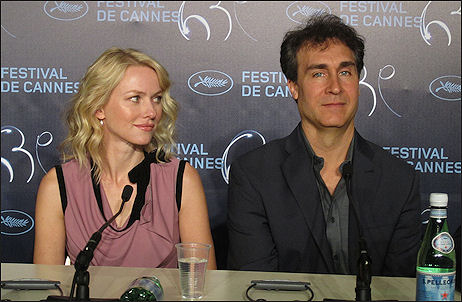
“Traditionally, this is not the type of character whom audiences fall in love with, or want to follow. Audiences want emotive characters who are interesting to watch. This was a bit of an issue with the characters (Naomi’s in particular) in Fair Game, especially with the producers who were more hell-bent on me doing more traditional emotion with her. I felt very strongly that I wanted her to keep the steel exterior that is so honest to that type of person in real life and the fact that I didn’t have to relent is exactly why I think Naomi’s performance is so extraordinary.
“I was able to be totally true to that steel facade and still create a character that is completely compelling, whom you empathize with and root for. And at the same time, you’re infuriated by her because she just has this steely exterior and won’t let you through it. We’ll see from this point forward whether my choice to insist on this detail was it was the right call.
“It would have been easy to create a fiction that Naomi’s Valerie is an emotional NOC (i.e., non-official cover). That she has this steely exterior but when she comes home and she’s something else. In fiction you can make up anything, but I actually spent time around the real Val and found her completely compelling as a person and she kept that facade no matter what she was doing, and I wanted Naomi Watts’ character to follow suit.
“In Fair Game though, it’s the Joe Wilson character that is the more movie star role, because he is loud, colorful, charismatic and opinionated. It’s no wonder that Sean Penn, after winning an Academy Award, picked this character over the hundreds of others he was offered, because Joe Wilson is an amazing character with the kinds of traits that are appealing to a masculine movie star. And Valerie is a little bit of a cipher and to make matters worse, Watts has to be on the screen with Penn while he’s getting to play this incredibly colorful, charismatic character and she has to play the cipher and somehow still steel the movie because it is her movie.”
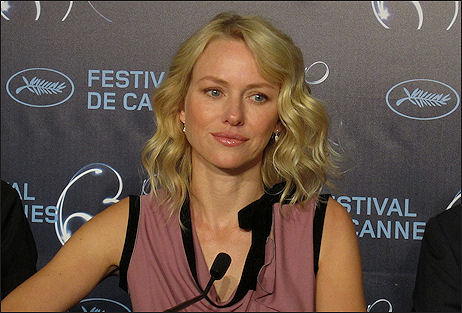
I’m standing with photographers in the nearly-packed Salle de Conference with the Fair Game press encounter about to happen, but I have time to say this: Fair Game is a stirring, suspenseful and immensely satisfying adult drama, brilliantly directed and written and acted, especially in the latter case by Sean Penn and Naomi Watts.
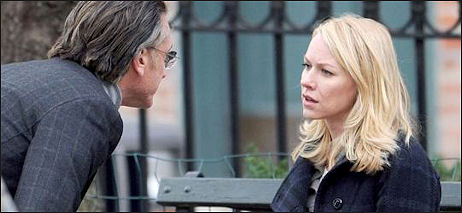
I’ve been hoping to like it all along, but the complexity and intelligence brought to bear upon the story of Joseph Wilson and Valerie Plame vs. the Bush administration — a tale of courage, cowardice, betrayal and bureaucratic denial all wrapped up into one — still came as a surprise.
Everyone who’s been taking shots at me for seeming too interested in or optimistic about Fair Game will now have to grovel and eat crow. I’m expecting reader posts to that effect. You know who you are.
I really and truly wasn’t expecting it to be quite this deft and assured. It seems to me like a revival of the spirit of the paranoid Alan Pukula of the ’70s with governmental-spook flavorings that harken back to Costa-Gavras and John LeCarre (or, more particularly, the British TV adaptation of Smiley’s People).
This is Doug Liman‘s best film by far, a Best Picture nomination waiting to happen, and a possible Palme d’Or. Really.
I asked Liman at the press conference about cynical expectations I’ve heard and read that delivering a crisp and complex political-emotional drama on the level of Pakula or Costa-Gavras was perhaps beyond the reach of the guy who directed Mr. and Mrs. Smith and especially Jumper. Liman recognized there was reason for people to think this given past career “mistakes,” but said “this is the kind of film I’ve always wanted to make.” Obviously proud and satisfied, and good for that.
Cheers also to co-screenwriters Jez Butterworth & John-Henry Butterworth, who’ve managed to weave together a mountain of facts, scenes, reportings, emotional moments, anecdotes, milieus and atmospheres into a wonderfully rich and complex whole that has a theme and a point.
Few things in life make me happier or deliver a better all-is-right-with-the-world feeling than grade-A films which expose right-wing scumbaggery with just the right amounts of care, precision and restraint. In this sense seeing Fair Game has been an especially delightful way to end my Cannes 2010 experience.